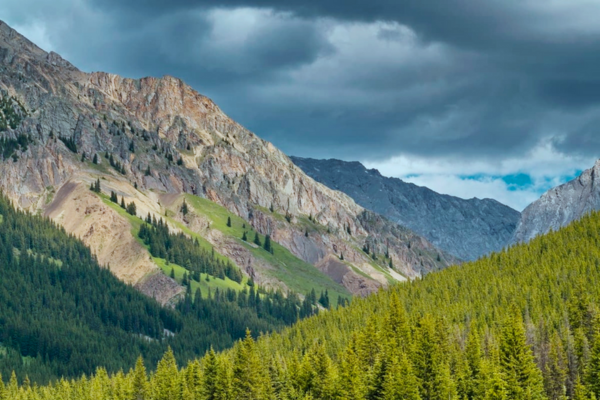Heritage Rangelands are a protected area designation specific for Alberta’s grasslands. Heritage Rangelands protect grassland ecosystems from further industrial disturbance and cultivation while using sustainable grazing practices to maintain healthy grasslands and provide economic benefits to Albertans.
The Government of Alberta recently announced a proposal to reclassify and expand the Twin River Heritage Rangeland Natural Area (HRNA). The Twin River HRNA is within the Milk River Ridge approximately 10 km west of the Town of Milk River. CPAWS Southern Alberta is encouraged by the reclassification and expansion of this native grassland protected area. We hope that it’s establishment sets a precedent and positive example of grassland conservation and the potential of heritage rangelands as an effective tool to protect native grasslands in Alberta.
Grasslands are one of the most endangered ecosystems of North America. The iconic native grasslands of Southeastern Alberta provide many environmental, economic, and social benefits to residents of the province. The grasslands of southern Alberta are essential for the maintenance of biodiversity and the protection of our air, soil, and water resources. Approximately 80% of Alberta’s species at risk are found in Southern Alberta, with the majority of these species located within the grassland natural region. Many of these species, such as the ferruginous hawk and swift fox, require large undisturbed areas of native prairie to survive.
The grasslands ecosystem is also an essential part of Alberta culture, heritage, and economy. Alberta’s native grasslands provide sustainable livelihoods for Alberta ranchers, while allowing people to experience nature through low-impact recreation (e.g., nature appreciation, hiking, hunting, and photography).
Under Canada’s Pathway to Target One, Alberta has also committed to protecting 17% of our lands and waters and ensuring:
“areas of particular importance for biodiversity and ecosystem services, are conserved through effectively and equitably managed, ecologically representative and well connected systems of protected areas and other effective area-based conservation measures.”
Alberta’s current network of parks and protected areas does not adequately represent, protect, or connect the full extent of the province’s natural areas regions. The Grassland Natural Region of Alberta remains greatly underrepresented within the province’s protected area network with only 1.29% of grassland ecosystems protected under legislation. Reclassification and expansion of the Twin River Heritage Rangeland will add a small area of grasslands to the protected areas network and raise the profile of grassland protection in the province.
As such, CPAWS Southern Alberta supports the protection and expansion of the Twin River Heritage Rangeland and strongly encourages the government to continue to explore other areas of native grassland for legal protection.
To adequately address the current gap in Alberta’s network of protected and effectively conserved areas, we will need to increase the extent of protected areas and other area-based conservation measures in the grasslands region and ensure landscape connectivity between areas of intact grasslands. Protecting and connecting the remaining large natural blocks of Alberta’s grassland will not only aid Alberta’s species at risk, but will also help to preserve natural ecological services, such as carbon storage, and provide security for sustainable grazing to maintain grassland health.
While the protection of Alberta grasslands as heritage rangelands is key to conserving the ecological and economic values of these areas, industrial activities should not supersede grassland protection. CPAWS Southern Alberta believes that existing industrial activity in the Twin River Heritage Rangeland should be completed as soon as possible and restoration activities to restore grassland habitat should begin. Any existing leases that are not yet in operation should not be allowed to proceed, but rather the leases should be secured and settled by the Government of Alberta. Industrial activities, particularly those that cause substantial surface disturbance or habitat fragmentation, are not appropriate in protected grasslands.
Collaboration amongst ENGOs, landowners, stakeholders, and the Alberta Government is required to move grassland conservation in Southern Alberta forward. We hope that the Twin River Heritage Rangeland is a first step towards greater grasslands protection across Southern Alberta.
Provide your feedback by August 31 by filling out a short survey to let the government know you support the reclassification and expansion of the Twin River Heritage Rangeland and want more grasslands protected in southern Alberta.
More News

Speak Up, Write Out: The Power of a Local Op-Ed

Survey Guide: Draft Alberta Plan for Parks Phase 2


